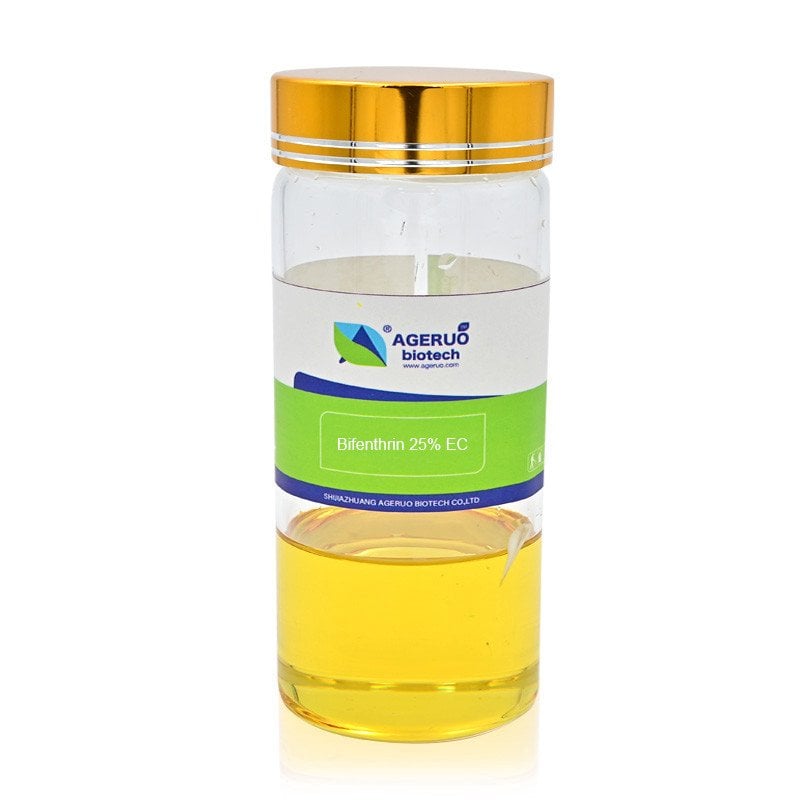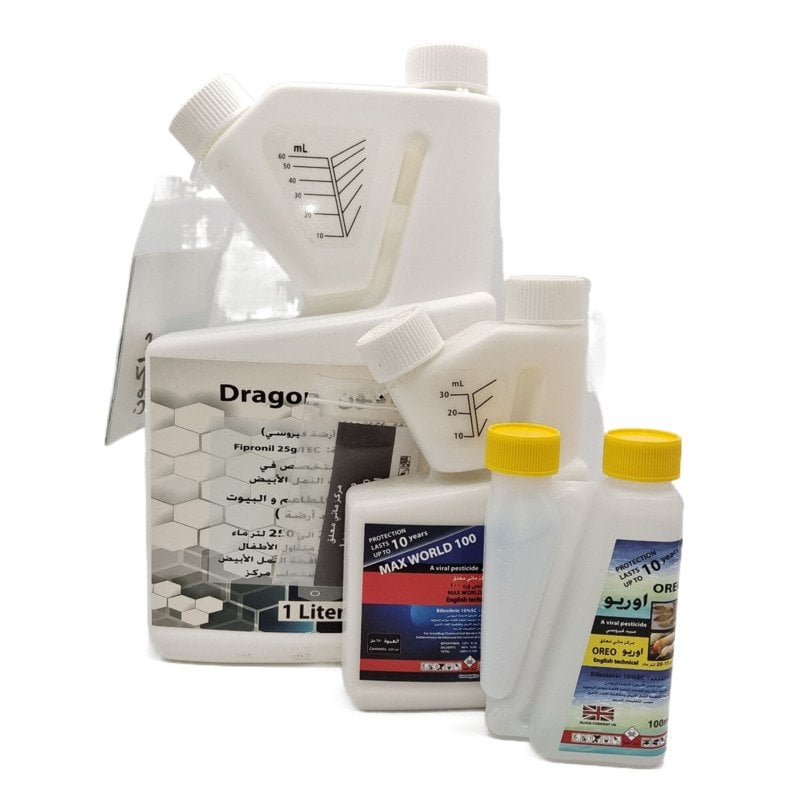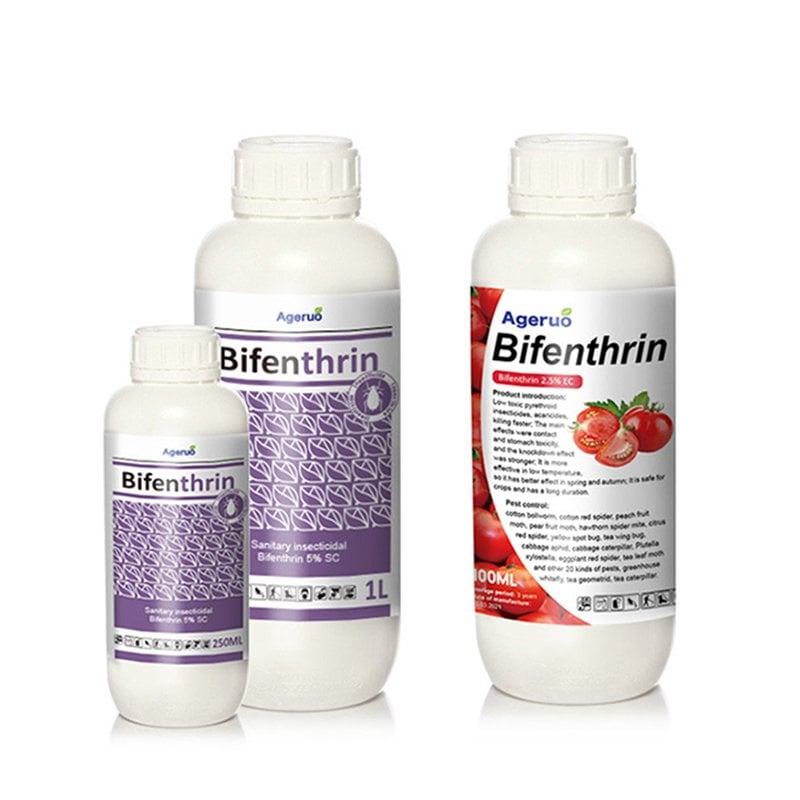Imidacloprid vs Bifenthrin
When it comes to pest control in agriculture, lawns, gardens, and structural management, imidacloprid and bifenthrin are two of the most popular and effective insecticides. While both combat a wide range of pests, they differ significantly in their chemical class, mode of action, and target pests. Understanding the differences between imidacloprid vs bifenthrin will help you make the right choice for your pest control needs.
Differences Between Imidacloprid and Bifenthrin
| Feature | Imidacloprid | Bifenthrin |
|---|---|---|
| Chemical Class | Neonicotinoid | Pyrethroid |
| Mode of Action | Targets nicotinic acetylcholine receptors | Disrupts sodium channels in nerve cells |
| Primary Use | Systemic control for sucking pests | Contact and residual control for crawling pests |
| Target Pests | Aphids, whiteflies, termites, beetles | Termites, ants, spiders, grubs, fleas |
| Systemic Activity | Yes (absorbed by plants and soil) | No (contact and surface residual) |
| Residual Effect | Long-lasting in soil and plants | Long residual on surfaces (weeks to months) |
| Preferred Use | Agricultural crops, lawns, tree treatments | Structural pest control, lawns, and gardens |
| Toxicity to Bees | High risk to bees | Low to moderate risk depending on exposure |
What is Imidacloprid?
Imidacloprid is a neonicotinoid insecticide that works systemically, meaning it is absorbed by the plant and transported throughout its tissues. Pests that feed on the plant ingest the insecticide, which disrupts their nervous system by targeting nicotinic acetylcholine receptors, leading to paralysis and death.
Uses of Imidacloprid
Imidacloprid is widely used for controlling sucking and chewing pests in agriculture, horticulture, and turf management:
- Aphids
- Whiteflies
- Leafhoppers
- Beetles (e.g., Japanese beetles, root weevils)
- Termites
- Grubs in lawns and soil
Applications of Imidacloprid
- Agriculture and Crops
Imidacloprid is used to protect fruits, vegetables, grains, and ornamental plants. It is particularly effective against sap-sucking pests like aphids and whiteflies. - Soil Treatments
Imidacloprid works well in soil drench applications to control pests like grubs, rootworms, and termite colonies. It remains active in the soil for an extended period, providing long-term protection. - Tree and Shrub Care
It is used for systemic protection in trees and shrubs against pests like borers and leaf miners. - Turf Management
Imidacloprid is effective against white grubs and chinch bugs in lawns and golf courses.
Advantages of Imidacloprid
- Systemic Action: Effective against pests that feed on plant tissues.
- Long Residual Activity: Provides extended pest control in soil and plants.
- Versatile Application: Can be used as a soil drench, foliar spray, or seed treatment.
Disadvantages of Imidacloprid
- Toxicity to Pollinators: High toxicity to bees and other beneficial insects. Avoid application during bloom or in bee-active areas.
- Limited Contact Action: Not as effective for direct control of crawling pests.
What is Bifenthrin?
Bifenthrin is a synthetic pyrethroid insecticide known for its broad-spectrum pest control and long residual effect. Unlike imidacloprid, bifenthrin works primarily through contact and ingestion by disrupting sodium channels in the pest’s nervous system, leading to paralysis and death.
Uses of Bifenthrin
Bifenthrin is highly effective against crawling and ground-dwelling pests, including:
- Termites
- Fire ants
- Spiders
- Fleas and ticks
- Grubs
- Beetles
Applications of Bifenthrin
- Lawn and Garden Pest Control
Bifenthrin is used as a spray or granular treatment for lawns, gardens, and landscapes to control pests like fire ants, fleas, and grubs. - Structural Pest Control
It is widely used for termite prevention and barrier treatments around homes and buildings. It also targets pests like spiders, cockroaches, and carpenter ants. - Agriculture
Bifenthrin provides control of pests in field crops, vegetables, and fruit orchards, particularly for chewing pests like beetles and caterpillars. - Ornamental Plants
Bifenthrin protects ornamental plants from pests like aphids, mites, and scale insects.
Advantages of Bifenthrin
- Long Residual Effect: Provides weeks to months of protection on treated surfaces.
- Broad-Spectrum Control: Targets a wide range of crawling and flying pests.
- Low Environmental Persistence: Binds tightly to soil and does not easily leach.
Disadvantages of Bifenthrin
- No Systemic Action: Requires direct contact for effectiveness.
- Limited Use for Sucking Pests: Not as effective as imidacloprid for pests like aphids or whiteflies.
Imidacloprid vs Bifenthrin: Which Should You Choose?
Choose Imidacloprid If:
- You are dealing with sucking pests like aphids, whiteflies, and leafhoppers.
- You need systemic pest control that works within the plant or soil.
- You require long-term pest protection in trees, shrubs, or lawns.
- You are targeting soil-dwelling pests like grubs or rootworms.
Choose Bifenthrin If:
- You are targeting ground-dwelling pests like termites, ants, and spiders.
- You need contact and residual control for crawling pests in lawns, gardens, or buildings.
- You require a broad-spectrum solution for chewing pests like beetles and caterpillars.
- You need long-lasting protection for structural pest management or termite barriers.
Conclusion: Imidacloprid vs Bifenthrin
Both imidacloprid and bifenthrin are highly effective insecticides but excel in different scenarios:
- Imidacloprid offers systemic control for sucking pests and soil treatments, making it ideal for agriculture and turf management.
- Bifenthrin provides long-lasting contact and residual control, making it the preferred choice for crawling pests, termites, and lawn protection.
By understanding the differences and specific applications of imidacloprid vs bifenthrin, you can select the right insecticide for your pest control needs.
When it comes to pest control in agriculture, lawns, gardens, and structural management, imidacloprid and bifenthrin are two of the most popular and effective insecticides. While both combat a wide range of pests, they differ significantly in their chemical class, mode of action, and target pests. Understanding the differences between imidacloprid vs bifenthrin will help you make the right choice for your pest control needs.
Differences Between Imidacloprid and Bifenthrin
| Feature | Imidacloprid | Bifenthrin |
|---|---|---|
| Chemical Class | Neonicotinoid | Pyrethroid |
| Mode of Action | Targets nicotinic acetylcholine receptors | Disrupts sodium channels in nerve cells |
| Primary Use | Systemic control for sucking pests | Contact and residual control for crawling pests |
| Target Pests | Aphids, whiteflies, termites, beetles | Termites, ants, spiders, grubs, fleas |
| Systemic Activity | Yes (absorbed by plants and soil) | No (contact and surface residual) |
| Residual Effect | Long-lasting in soil and plants | Long residual on surfaces (weeks to months) |
| Preferred Use | Agricultural crops, lawns, tree treatments | Structural pest control, lawns, and gardens |
| Toxicity to Bees | High risk to bees | Low to moderate risk depending on exposure |
What is Imidacloprid?
Imidacloprid is a neonicotinoid insecticide that works systemically, meaning it is absorbed by the plant and transported throughout its tissues. Pests that feed on the plant ingest the insecticide, which disrupts their nervous system by targeting nicotinic acetylcholine receptors, leading to paralysis and death.
Uses of Imidacloprid
Imidacloprid is widely used for controlling sucking and chewing pests in agriculture, horticulture, and turf management:
- Aphids
- Whiteflies
- Leafhoppers
- Beetles (e.g., Japanese beetles, root weevils)
- Termites
- Grubs in lawns and soil
Applications of Imidacloprid
- Agriculture and Crops
Imidacloprid is used to protect fruits, vegetables, grains, and ornamental plants. It is particularly effective against sap-sucking pests like aphids and whiteflies. - Soil Treatments
Imidacloprid works well in soil drench applications to control pests like grubs, rootworms, and termite colonies. It remains active in the soil for an extended period, providing long-term protection. - Tree and Shrub Care
It is used for systemic protection in trees and shrubs against pests like borers and leaf miners. - Turf Management
Imidacloprid is effective against white grubs and chinch bugs in lawns and golf courses.
Advantages of Imidacloprid
- Systemic Action: Effective against pests that feed on plant tissues.
- Long Residual Activity: Provides extended pest control in soil and plants.
- Versatile Application: Can be used as a soil drench, foliar spray, or seed treatment.
Disadvantages of Imidacloprid
- Toxicity to Pollinators: High toxicity to bees and other beneficial insects. Avoid application during bloom or in bee-active areas.
- Limited Contact Action: Not as effective for direct control of crawling pests.
What is Bifenthrin?
Bifenthrin is a synthetic pyrethroid insecticide known for its broad-spectrum pest control and long residual effect. Unlike imidacloprid, bifenthrin works primarily through contact and ingestion by disrupting sodium channels in the pest’s nervous system, leading to paralysis and death.
Uses of Bifenthrin
Bifenthrin is highly effective against crawling and ground-dwelling pests, including:
- Termites
- Fire ants
- Spiders
- Fleas and ticks
- Grubs
- Beetles
Applications of Bifenthrin
- Lawn and Garden Pest Control
Bifenthrin is used as a spray or granular treatment for lawns, gardens, and landscapes to control pests like fire ants, fleas, and grubs. - Structural Pest Control
It is widely used for termite prevention and barrier treatments around homes and buildings. It also targets pests like spiders, cockroaches, and carpenter ants. - Agriculture
Bifenthrin provides control of pests in field crops, vegetables, and fruit orchards, particularly for chewing pests like beetles and caterpillars. - Ornamental Plants
Bifenthrin protects ornamental plants from pests like aphids, mites, and scale insects.
Advantages of Bifenthrin
- Long Residual Effect: Provides weeks to months of protection on treated surfaces.
- Broad-Spectrum Control: Targets a wide range of crawling and flying pests.
- Low Environmental Persistence: Binds tightly to soil and does not easily leach.
Disadvantages of Bifenthrin
- No Systemic Action: Requires direct contact for effectiveness.
- Limited Use for Sucking Pests: Not as effective as imidacloprid for pests like aphids or whiteflies.
Imidacloprid vs Bifenthrin: Which Should You Choose?
Choose Imidacloprid If:
- You are dealing with sucking pests like aphids, whiteflies, and leafhoppers.
- You need systemic pest control that works within the plant or soil.
- You require long-term pest protection in trees, shrubs, or lawns.
- You are targeting soil-dwelling pests like grubs or rootworms.
Choose Bifenthrin If:
- You are targeting ground-dwelling pests like termites, ants, and spiders.
- You need contact and residual control for crawling pests in lawns, gardens, or buildings.
- You require a broad-spectrum solution for chewing pests like beetles and caterpillars.
- You need long-lasting protection for structural pest management or termite barriers.
Conclusion: Imidacloprid vs Bifenthrin
Both imidacloprid and bifenthrin are highly effective insecticides but excel in different scenarios:
- Imidacloprid offers systemic control for sucking pests and soil treatments, making it ideal for agriculture and turf management.
- Bifenthrin provides long-lasting contact and residual control, making it the preferred choice for crawling pests, termites, and lawn protection.
By understanding the differences and specific applications of imidacloprid vs bifenthrin, you can select the right insecticide for your pest control needs.









